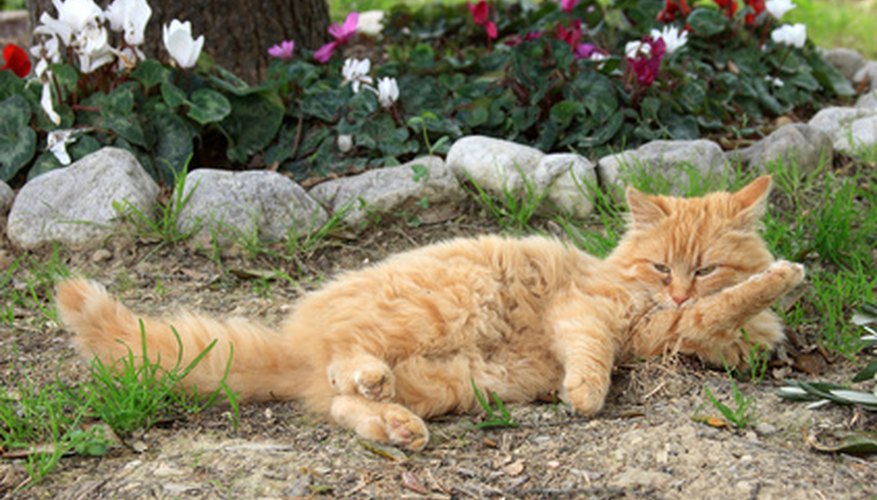Treating your cat's foot pad injury requires special care and caution. Because cats walk on their foot pads all the time, there is a high risk of infection if the cut pad is not properly treated. Taking your cat to the veterinarian is essential to making sure he receives topnotch care, but sometimes injuries occur while the vet's office is closed. Caring for the cut at home will ease some of your cat's pain, helping him relax until you can get him in to see the vet.
- Treating your cat's foot pad injury requires special care and caution.
- Taking your cat to the veterinarian is essential to making sure he receives topnotch care, but sometimes injuries occur while the vet's office is closed.
Hold your cat still while you examine the cut pad. A cat in pain will struggle against you, especially if you're trying to access the source of the pain. You may need to have someone else hold the cat in place while you work.
Inspect the cut for signs of objects lodged in the foot pad, such as thorns, splinters or broken glass.
Pinch a lodged object between tweezers and slowly draw it out. Your cat may struggle, as this will be painful. Talk to your cat to try and keep it calm.
Soak a cotton ball in hydrogen peroxide and dab the wound to clean it.
Wrap your cat's paw in gauze, taping it in place with medical tape. This will keep your cat's paw clean until you can get her to the vet.
- Inspect the cut for signs of objects lodged in the foot pad, such as thorns, splinters or broken glass.
- Wrap your cat's paw in gauze, taping it in place with medical tape.
TIP
Cats in pain do not realise you are trying to help them. Don't be surprised if your cat tries to bite or scratch you while you're trying to remove a splinter or put medicine on the foot pad. If your cat's foot pad is bleeding profusely, take him to the vet immediately.
WARNING
A footpad injury should be inspected by your veterinarian, even if you've removed an embedded splinter or piece of glass. There may be smaller splinters in the wound that could lead to infection.
